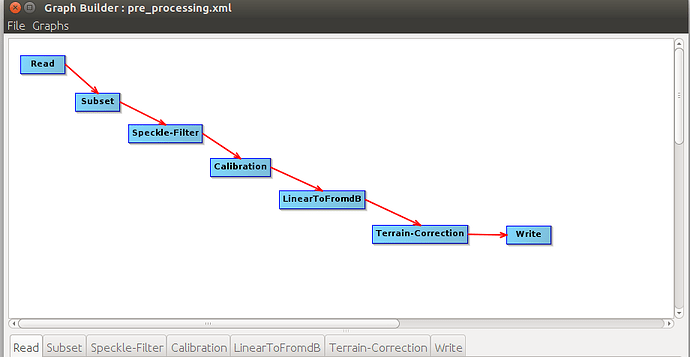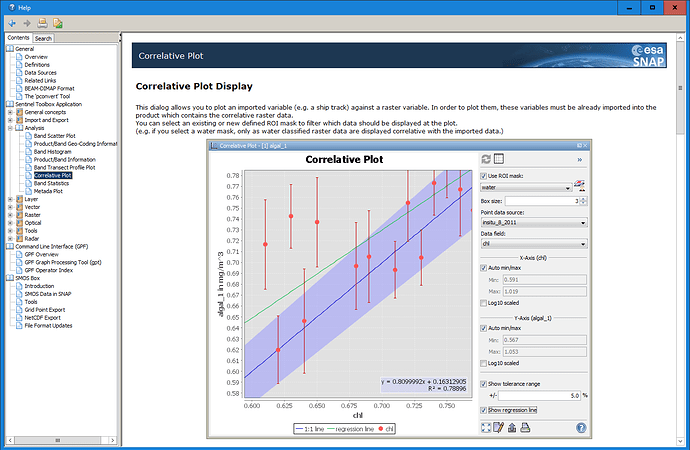How can we identify soil moisture using Sentinel-1 SAR C-Band data and sentinel 2 data within the SNAP toolbox.
Is we need to create any mathematical model?? or Is the tools are readily available in the SNAP??
Hi,
As far as I know, soil moisture retrieval has not been implemented in SNAP. There are a few methods that have been developed for retrieving sol moisture from SAR. These are the following:
- Soil moisture retrieval using
theoretical scattering model - Soil moisture retrieval using
semi-empirical scattering models - Soil moisture retrieval using
change detection - Soil moisture retrieval using
Interferometry - Soil moisture retrieval using
polarimetric parameters
The methods mentioned above are the ones that mostly used for retrieving soil moisture from SAR.
Here are some relevant articles to look at:
https://www.tandfonline.com/doi/abs/10.1080/01431161.2013.813654
Hi johngan, Thanks a lot for your response.
I am very interested in studying this radar. But after I read the article and I tried to imitate the way of processing but I was stopped at the point of processing in the snap alone, maybe because I do not know or do not understand the way of advanced processing using the formula in the article. Maybe from you can help me overcome the difficulty ???
retrieving soil moisture from radar is mostly not doable with a single formula. Please have a look at these considerations: Soil moisture mapping using Sentinel-1-Data and SNAP? and After Sigma0
Hello,
You cannot derive soil moisture using just a single SAR image. Most of the studies of soil moisture retrieval conducted using time series data (as described in the article I have posted above). This procedure is called change detection and it is widely used.
To derive soil moisture from SAR, to be more precise, relative soil wetness you can do the following steps:
-
Data collection. A series of SAR data collection within a period of time -
Image pre-processing: Each SAR image should be pre-processed seperately (speckle noise suppression, radiometric calibration, incidence angle normalization if needed and terrain correction). -
Change detection: To perform change detection you need to subtract a SAR image acquired under dry weather conditions from a SAR image acquired under wet weather conditions. You should follow the equations described in the article i have posted.
These equations are straightforward to be applied. SO, you can use the band math in SNAP to apply the equations on your image.
Things to consider
Relative soil wetness from SAR is not possible if your AOI is covered by a thick vegetation. The microwave signal interacts with the leaves and doe not penetrate through to reach the soil.
NDVI index should be calculated using optical data. Then, this layer can be used to mask out the vegetated area in your image.
I hope that hekps
Usefull information @johngan
Thanks you sir.
I have collected radar images some time in real time as you say. But I can only process the radar image until I get the backscatter value. And for the next stage I do not know how to process from backscatter to get a raster image or soil moisture map that contains soil moisture values???. Maybe mr can help me.
And than, I apologize in advance because I am not an expert in processing radar or optical image data, because I am not among geophysicists or geomatics.
Hi,
First of all, there are quite a few methods developed for deriving soil moisture. I have used the change detection method. A time series of SAR images is require (you have already collected the images as you mentioned). In terms of pre-processing the SAR images, Figure 1 describes the steps that need to be followed.
Figure 1. SAR image preprocessing
Once each image is pre-processed, then you can apply the equations described in the papers below to derive the soil wetness
using ENVISAT for soil moisture retrieval.pdf (877.6 KB)
Those papers are very good and describe exactly what you need to do in order to derive soil wetness from SAR.
A summary of steps to be followed is given below:
-
SAR Data collection*
-Time series data collection(GRD) within a time window -
Data pre-processing
-Pre-process each individual SAR image as shown in figure 1
-Mask out areas for each SAR image with NDVI index above 0.6. (NDVI index is not the best measure though as it does not tell us anything about how tall trees are or the shape of trees canopy.)
-Take the average of all the masked time-series SAR images -
Soil mositure retrieval
Dry amd Wet reference determination.For change detection method, we need an image acquired under wet weather conditions and an image acquired under dry weather conditions.
-Two-tailed test.To derive wet and dry reference, we perform a two-tailed test using z-score. Values that falls beyond 1.96 (which represents the 97.5 percentile) are the extreme high values, while values below -1.96 are the extreme values. Then, we take the average for both high and low values and we have our wet and dry reference
-Soil moisture retrieval.Finally, soil moisture retrieval can be derived using the equations shown at the articles
This is a brief summary of what you need to do.
I hope that helps
thank you sir, for the information and knowledge that you gave me,
and hopefully my curiosity about this soil moisture measurement can be answered
Hello!In the paper you provided, I know how to get the soil moisture index, but I am not quite sure what is the relationship between SMI and soil moisture content? Thank you in advance!
Hi,
Soil moisture content refers to the quantity of water contained in a material, such as soil (called soil moisture). Water content is expressed as a ratio, which ranges from zero (completely dry) up to the value of material’s saturation. Water content is measured in m^3 (volume). In order to derive soil moisture content, we need to know some parameters (e.g volumetric water content) which can be derived from in situ measurements .
Using earth observation (SAR data) techniques, we cannot derive soil moisture content (unless we incorporate in site measurements in our analysis). We can derive soil moisture index (soil wetness) which tells us how much wet or dry the soil is.
If we have in site measured data, we can get the soil moisture data through regression analysis.
you can import the measurements as points (by CSV or Shapefile) and use the correlative plot view to build a regression.
The results of soil moisture depends on the size of your AOI and the number of soil moisture sensors.
If you have to study an area, let’s say 100km x 100km using satellite data, you are gonna need a network of sensors scattered around your AOI (might be 100, 200, e.t.c). These sensors will provide you with accurate measurements of water content and their geographic location using GPS equipment.
In order though to estimate the the soil moisture content for the whole satellite scene, you will probably need to apply machine learning algorithms (Neural Network, SVM, e.t.c) in order to make predictions of the soil moisture content for the whole satellite scene.
I agree. There is no simple relationship. But applying ML would require several spatial input parameters. One single SAR image is not sufficient. I therefore like the idea discussed here to calculate an index value (based on multi-temporal SAR data) which can be directly related to the measured moisture variations.
yes agree, on SAR image is not sufficient. We would need other auxiliary data (optical data potentially as well)
the simplest way to do it is the one you described.
Means “wet weather conditions“ that it must rain while the acquisition is ongoing or short before the acuisition? I thought precipitation while radar meassurements leads to unwanted noise?
I’d say shortly before the image acquisition would be the ideal case, but certainly not during the measurement.
Not sure you are aware of the Copernicus product from the copernicus services on Soil moisture from Sentinel-1 that will be soon coming.
https://land.copernicus.eu/global/news/service/sentinel-1-observations-soil-moisture

